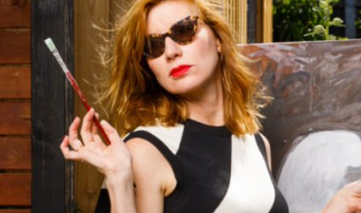The Museum of Old and New Art (Mona) in Tasmania has come under fire from art experts after admitting that the Picassos hung in the women’s toilets were actually painted by the museum owner’s wife, artist Kirsha Kaechele. This revelation has sparked widespread criticism, with experts labeling the act as “childish” and “unprofessional,” fearing it might leave the public feeling deceived.
Mona’s curator, Kirsha Kaechele, has revealed that the artworks that caused a furore by being shown to females only were, in fact, fake, so fake that she painted them herself.
MONA released a statement on their website on Wednesday, announcing the reveal. pic.twitter.com/ZcF3BFXHDD
— The Project (@theprojecttv) July 11, 2024
The controversy began when Mona revealed that the supposed Picassos, intended as a protest, were in fact created by Kaechele. Art critic Christopher Heathcote, author of Inside the Art Market, criticized the museum’s actions as a form of “attention-seeking sensationalism,” adding that it reflects poorly on Mona. Similarly, art critic John McDonald warned that such hoaxes could erode public trust in museums, which are expected to display authentic works of art.
Kaechele first created these fake Picassos over three years ago when she installed the Ladies Lounge, a women-only space within the museum. After a legal challenge deemed the installation discriminatory, Kaechele moved the artwork to women-only toilets instead of making the lounge inclusive. Kaechele defended the exclusive space as a feminist statement about historical gender-based exclusions from public spaces.
Ya Know Those Picassos Hanging In MONA’s Ladies Loo That Men Cried About? They Were Fake, You Losershttps://t.co/fBlNzi3myF
— PEDESTRIAN.TV (@pedestriandaily) July 11, 2024
The backlash intensified when Kaechele posted a video of the paintings on social media, prompting inquiries into the artwork’s authenticity. The museum ignored initial questions but later admitted the truth, with Kaechele planning a full confession. In her statement, she highlighted the media’s gullibility in believing the ruse, which included coverage from esteemed publications.
Veteran art critic Elizabeth Fortescue expressed discomfort over the deception, suggesting that the public might feel betrayed. She emphasized the importance of trust and integrity in museums, noting that displaying fake Picassos without transparency was ill-advised. Donna Brett, chair of art history at the University of Sydney, acknowledged that while Kaechele’s actions were “problematic” and “juvenile,” they did not constitute art fraud as there was no attempt to create false provenance or sell the works.
The Paris-based Picasso Administration also weighed in, expressing regret over the situation but accepting Mona’s readiness to withdraw the paintings. They emphasized that intellectual and creative property laws apply to everyone and expected Mona to adhere to these principles in the future.
#Dyson re: #MONA’s fake Picassos in the Ladies loo. pic.twitter.com/cHgqFaANUa
— CaraMia200 (@CaraMia200) July 12, 2024
McDonald believes this incident has damaged Mona’s international standing, arguing that museums cannot maintain respect by playing such pranks. He warned that if such practices became common, the fundamental trust in museums would be destroyed. Heathcote echoed these concerns, noting that the deception could negatively impact Tasmania’s tourism, as Mona is a key attraction.
Key Points:
i. Mona admitted that the Picassos hung in the women’s toilets were fake, painted by the museum owner’s wife, Kirsha Kaechele, leading to widespread criticism from art experts.
ii. Critics labeled the act as “childish” and “unprofessional,” expressing concerns that it might erode public trust in museums.
iii. Kaechele defended the exclusive space as a feminist statement about historical gender-based exclusions from public spaces.
iv. The Paris-based Picasso Administration expressed regret over the situation but accepted Mona’s readiness to withdraw the paintings.
v. The incident has potentially damaged Mona’s international standing and could negatively impact Tasmania’s tourism, as Mona is a key attraction.
Conner T – Reprinted with permission of Whatfinger News



